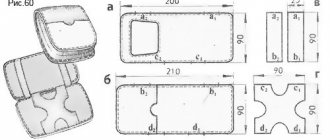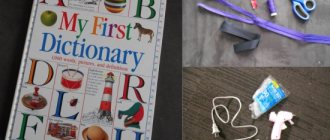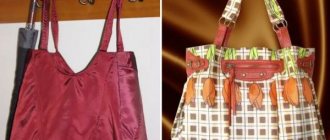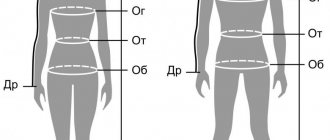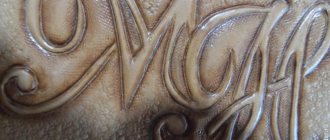Dimensions
When choosing sailing boats, future owners should pay special attention to the size of the vessel. The number of crew that can be accommodated on board, the purchase budget, and the overall level of comfort directly depend on this. The following options are currently available:
- Wooden and inflatable sailing boats measuring 25-30 feet. They are characterized by a reduced level of comfort and low speed of movement. However, during operation, the owner will be pleased with the relatively low costs of maintaining the watercraft. Such vessels are quite easy to control. And there are no problems finding storage space here.
- Sailing boats of 30-40 feet have optimal dimensions in terms of seaworthiness and comfort level. Such a vessel can easily accommodate a crew of 6-8 people. Sailboats of this size have a spacious cockpit and bow, where there is plenty of space for relaxing and sunbathing.
- Sailboats over 40 feet in length are a favorite size for people who enjoy long-distance sailing. The spacious deck provides increased comfort during operation. In general, a large sailing boat offers excellent performance, convenience and prestige, but at the same time a high price.
Sailing rig for an inflatable boat
Inflatable boats are one of the simplest and most convenient small vessels. They have good stability and sufficient capacity. But it’s not so easy to put a standard mast and sail on them and turn them into a sailing vessel. So gaff and Bermuda sailing rigs are not applicable on an inflatable boat. But there is a solution that is a little reminiscent of Shchatin’s weapons.
The design of the spar here is simple, it is easy to quickly assemble and disassemble. There is no standing rigging. The spar itself consists of:
- Base pipe-cross member (15),
- Two tubes, the mast itself (12),
- Ray (4).
Design-drawing of a sail for an inflatable boat.
The base pipe (15) with a diameter of 25-30 mm is inserted into the oarlocks (14), which are on the sides of the inflatable boat. Next, the lower ends of the tubes (12) of the double D-shaped mast are secured to the ends of the base pipe (15) using M5 screws (11). The upper ends of the tubes are connected to each other and to the yard (4) by a through connecting screw (13) with a nut (16). The tubes that make up the structure of the mast and yard have a diameter of 15 mm and can be made from ordinary aluminum ski poles. The yard can easily be made dismountable; it is better to place a connecting tube (5) 200 mm long at the junction of the mast with the yard.
A block (6) for the halyard is mounted on the upper end of the yard. The lower end of the yard is attached to the rubber loop on the bow of the inflatable boat using a bracket (3). The loop (2) is a circle with a diameter of 60 mm made of 5 mm sheet rubber. The lower part of the circle is attached to the boat hull (1) (you can use glue), and a hole is made in the upper freely bendable half for the bracket.
The yard tilt angle is 60 degrees. Decreasing the angle will reduce the efficiency of the sail at full courses, and increasing it will increase the pressure of the yard on the boat's hull.
The dimensions of the tubes depend on the length of the boat itself. After choosing the location for attaching the yard on the bow of the boat, you need to measure the distance “ a ” to the base pipe threaded through the oarlocks (14). The length of the mast tubes is calculated by the formula:
where b is the distance between the oarlocks along the base pipe.
The length of the yard depends on the chosen alignment. With a centering of 10%, the yard length is calculated by the formula:
lр = 1.8α
The place where the yard is attached to the mast is located at a distance “ a ” from its lower end.
The screws (10) are made of 3 mm thick duralumin. They are put on the ends of the base pipe, which protrude beyond the sides of the boat. Wooden pads (17) are made from boards or plywood 10 mm thick. They give rigidity to the wheels and reduce their angle of rotation to the DP. The screws on the base pipe are fixed with rings of larger diameter (9) and they are locked with screws (7) and M5 nuts (8).
The sail is an equilateral triangle, the apex (head angle) of which is shifted towards the bow relative to the axis of the base pipe by size C = (6÷12)%lsh . The length of each luff lsh = 1.7α .
The Lyngstrom sail is an excellent sail for an inflatable boat. It will increase the sail area at full course by approximately 2 times. On the outer side of the fold along the luff (line n = n1 ) a liktros is sewn to which the segars or sezni are attached. There are eyelets in all four corners. The clew angles m, m1 are connected on sharp courses.
To secure the tack angle, the same bracket connecting the lower end of the yard and the rubber loop is suitable.
The rudder is an oar, which is threaded into a rubber oarlock glued to the stern.
Tags
equipment sail
Sustainability
The sail acts as a means of converting the aerodynamic force of the wind into thrust, which forces the boat to move forward. However, to be able to use sails, a vessel requires the ability to resist capsizing. This is achieved thanks to the stability of the hull, as well as the use of ballast.
Inexperienced sailors should prefer a boat with a wide hull. In this case, when the wind acts on the sail, the base will create a so-called straightening moment, which helps improve stability.
Minicat Guppy: inflatable mini catamaran
In 2022, Minicat expanded its range with the new inflatable catamaran Minicat Guppy, which is only 3 meters long. The line currently consists of three models: Minicat 460, Minicat 420 and Minicat 310 , and Guppy is the youngest. Like its predecessors, Guppy was developed in collaboration with renowned yachtswoman Laura Dekker and offers a new production concept.
Guppy Trampoline is firmly connected to the two hulls for the first time and also remains attached when folded. This new principle reduces the assembly time of a ready-to-use minicat by 10 minutes compared to other models. Another advantage of this small model is its low weight - only 26 kg, which makes transport extremely easy.
The catamaran is designed for two people and is transported rolled up in a storage bag, so it is especially suitable for spontaneous trips or storage on the yacht. The design itself is also very simple for the untrained: unfold the hulls and trampoline, insert two 1.5 meter long ribs, inflate both hulls, insert the central pipe and steering gear, fold the mast into three parts, set the sail and you're done.
Price: 2,595€ including VAT on the official website
Technical data:
- Length: 3.00 m
- Width: 1.50 m
- Weight: 26 kg
- Bag size: 160 cm x 30 cm x 40 cm
DIY sails made of fabric
Do-it-yourself sail made of fabric
Do-it-yourself sails made of fabric are quite simple. To make a sailing dome, you need to take tarpaulin or nylon fabric, raincoat fabric measuring 1.5 by 2 meters. To get an even dome, it is folded in four, a curved line is drawn from the upper end, then a cut is made along this line. The result will be four dome-shaped pieces that need to be sewn together. To obtain a dome of the correct shape, it is recommended to pre-make paper blanks for a sail anchor. To do this, you can use any graphic editor program and then print and cut out a drawing of the main part of the water sail, or make it out of paper with your own hands using drawing accessories.
A strip is sewn along the lower edge of the resulting dome, inside which a nylon cord is inserted. Its length can be adjusted, thereby decreasing or increasing the diameter of the water sail ring. But it is best to use a metal ring frame. To do this, you will need a wire ring with a diameter of 6-8 mm or a regular sports aluminum hoop. The size of the hoop will allow the PVC boat to stay afloat and ensure its optimal speed while fishing.
A ring made of wire or hoop is covered with tarpaulin or nylon fabric so that there is no sagging. The diameter of the circle must be divided into three equal parts, and meter-long slings must be tied to these sections, which are connected at the ends together. You need to tie a five-liter plastic bottle to the top of the fabric water sail, and a small weight to the bottom. Thanks to this design, the anchor will stick to the current and remain afloat in a vertical position. However, if the weather is too windy, the five-liter container should be replaced with a half-liter one so that the anchor goes slightly under the water and does not inflate above it. Then it will allow you to stably maintain the ship's course with the current.
How to make a wooden boat with your own hands?
It is best to start making a vessel in the courtyard of a private house or in some spacious area. This will make it easier to take measurements, turn the boat over, and do all the other important work in making the boat. If this is not possible, try to carry out construction in a well-lit, clean and dry room:
So, to begin with, it is important to prepare for yourself the so-called building material. It is best to have about 10 boards on hand, about 21-22 millimeters thick
They will be a good help to you in your difficult but very interesting task. Also, to begin with, we prepare the bow of the future vessel, it will be a kind of triangle; It is worth noting that boatmen say that at the very beginning of work it is worth making certain chamfers in the bow of their boards. This can greatly facilitate your work in the future. Many people try to do everything as quickly as possible. But there is important advice in this matter - it is better to try to do the work measuredly and work through everything conscientiously, so that later you do not have to over-perform any specific actions; so, when you have already assembled the very foundation of your future small-sized vessel, it is worth installing a transom there. It is better to do this at an angle of 10 degrees. As time goes on, you may need to make a specific extension for your transom. This is done so that you can correctly install the motor of your watercraft;
- so, when you have completed the preliminary work described above, then it is worth moving on to a new stage of preparations. As you continue your construction, you need to take care of what kind of bottom your watercraft will have. Boats have several types of bottoms: metal, wood and also plastic. You need to decide what kind of material you want to see on the bottom of your boat, and only then act according to your plan. Many note that an iron bottom can constantly create unnecessary noise and somehow distract passengers and the captain. In addition, the metal bottom will not be very rigid and durable - we can assume that such a design is not very reliable;
- however, some boaters describe that at a certain period they made a choice in favor of a wooden bottom, and then slightly regretted this decision. After a certain time, certain cracks may form in the wooden bottom, sometimes even quite large ones. Sometimes one of the powerboaters even decides to disconnect the already finished bottom and make a new one. Often the new choice is a bottom made of some material like laminated plywood.
You also just need to fill all the joints with durable material that will make your vessel solid, durable and windproof. Often a material such as butyl rubber sealant or something similar is used. Such sealants are most often used for hydraulic sealing of all kinds of collisions and joints in houses that are made of panels. For many, this material is the most accessible.
Many boatmen, in their subsequent operation of a small-sized vessel, note that subsequently nothing blows or leaks after similar work with joints on the invented boat.
It is also important that your watercraft have a keel. You can make such a keel measuring, say, 50 by 50 centimeters from a material like aluminum brand
Although for some vessels this size may even be too small. Therefore, you need to accurately calculate the dimensions of your boat and its keel.
Often, ordinary people adhere to the average parameters of a wooden boat they make for a motor with their own hands: they take as a basis a length of 4 meters, a bottom width of 1 meter. The weight of such a boat is even less than 100 kilograms, and such a vehicle still fits into the category of small-sized watercraft.
Well, the last point may be further testing of your water transport. Here every builder-inventor will listen to his own invention and take a closer look at it. Do we need to make any other adjustments or is everything functioning normally and smoothly? To do this, of course, you should test your boat for some time on safe small bodies of water where nothing bad can happen.
In addition, I would like to note the point that it is worthwhile to design and paint your boat well the way you like it. It may be a small thing, but the boat will be pleasing to the eye. And you should not begin its full operation until absolutely all work on its production is completed.
Weather conditions for catfishing
Sometimes the catfish is active, but weather conditions interfere (mostly, of course, the wind), and sometimes there is complete calm on the Volga. But the catfish, although it reacts to the sounds of the quok, rises and follows the boat, does not take the bait.
Very often you find yourself in a situation where you don’t know whether the weak morning breeze will turn into a moderate breeze an hour later or die out completely.
You have to make a decision blindly, but catching catfish with a kwok in windy weather is hard work, especially if you are fishing alone.
Having only two days off a week for my favorite hobby, I resolve all controversial issues for myself in favor of fishing, and come what may, I fish to the bitter end. I have never hunted for catfish while anchored in one place, although I know colleagues who successfully fish this way.
For me, searching for active catfish means rafting through the water area above a riverbed or ditch. I was convinced that results can be achieved even in windy weather if you use a water sail.
It is more difficult to nod in the wind than in a complete calm, but over time the hand gets used to it and the skill is developed.
TOPCATK2X: sports mini catamaran
The new 2022 model of the 17-foot TOP2AT K2X is designed to be a sporty, fast and reliable all-around catamaran with a U-frame, reverse rake stems, and wide chines above the waterline. The company has updated the shape of the hulls to further satisfy the quality of performance, no matter how you use your kat - be it solo sailing after work, on a yacht trip with children or in a club regatta.
The buoyancy of the hull volume is sufficient for parents with two children. And for lifting after capsizing, 85 kilograms are enough. Those who weigh less during solo sailing can use a lifting device with a pulley block. The TOP2AT K2X is also designed for sailing schools, where often at the beginning of the course the instructor joins beginners on the ramp.
Depending on the use, cat enthusiasts can choose between three different types of sails. The simplest one, called Classic , is a Dacron and a 4.2 m² furled jib. Streamcut option is a Dacron , luff and double trapeze. The regatta version also includes a 17.7 m² furling gennaker, as well as a Pentex and, among other things, a roller roller and a Harken for the main sheet.
Price: Classic – 13,200€ / Streamcut – 14,300€ / Regatta – 17,500€
Official site
Technical data:
- Length: 5.17 m
- Width: 2.48 m
- Weight: 160 kg
- Transportation: trailer
RS 21 from RSSailing: a progressive trailer keelboat
RS Sailing RS 21 progressive keelboat concept , which features a wide range of potential applications. The RS 21 is RS Sailing's to the requests of many yacht clubs for a simple, easy to sail and affordable boat for forming small fleets for training, teaching and organizing regattas. Designed for clubs, sailing schools and ambitious sailors, the RS 21
Measuring 6.34 meters long and 2.20 meters wide, the boat offers plenty of space thanks to a functional design by Joe Richards of Whitehouse Yacht Design , and can comfortably accommodate up to 4 people. The neat cockpit remains clean thanks to thoughtful design details and makes the RS 21 , allowing her to sail efficiently and safely with a crew of two. Moreover, this mini-yacht is available in club and racing versions.
The stable, light and very powerful body of the RS 21 with pronounced chines ensures a sporty and fast ride in the group. The ballast share of the T-keel is about half of the total weight - 675 kg. The 1.38 meter long keel can be easily lifted for trailer transport and the manually lifted carbon mast can be easily disassembled into two parts for transport. Sheets, halyards and sails can be stowed behind the hatch in the foredeck for transport.
Price: 31,570€ including VAT
Official site






